1850-59
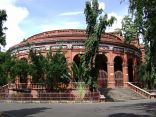
1855
Arignar Anna Zoological Park
(Chennai Zoo, India) In 1854, the city's first zoo began in the Pantheon (museum) complex with a cheetah and a tiger. This attracted people from distant places and Edward Green Balfour, the then director of the Government Central Museum at Madras, persuaded the Nawab of the Carnatic to donate his entire animal collection to the museum. This attracted large crowds and became the nucleus of the Madras Zoo, which was founded in 1855. Although Balfour started the zoo on the museum premises, a year later it had over 300 animals, including mammals, birds and reptiles.
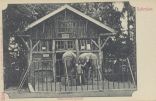
1855
Diergaarde Blijdorp
(Rotterdam, the Netherlands) In 1855, a garden for pheasants and waterfowl was set up in the center of Rotterdam, at the Kruiskade. The bird garden was owned by the railway officials F. van der Valk and G.M. van den Bergh. It became a success
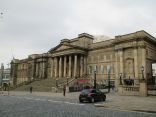
1857
World Museum
(Liverpool, North West England, United Kingdom) When the 13th Earl of Derby died in 1851, he left his natural history collection to the town of Liverpool. The town council arranged for the collection to be moved to a hastily built museum on the corner of Slater Street and Parr Street, not far from the docks. The mayor of Liverpool declared the new Derby Museum of the Borough of Liverpool open on 18 March 1853. 1857 Aquariums were added.

8th August 1858
Zoo Frankfurt
(Frankfurt, Hesse, Germany) In 1857, a provisional committee came forward with the idea of establishing a zoological garden in Frankfurt, leased a site, obtained the necessary permits and founded the Zoological Society for the purpose of setting up and operating a zoo in Frankfurt. The first general meeting took place on March 7, 1858. On August 8, 1858, the zoological garden was opened in the Lerschner Garden in the west of the city.
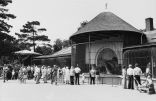
1859
København Zoo
(Frederksberg, Denmark) Copenhagen Zoo was founded by the ornithologist Niels Kjærbølling in 1859. He was given the summer garden of "Prinsess Vilhelmines Have" (The garden of Princess Vilhelmine) by the chief directorate of Copenhagen. The animals that the visitors could contemplate at the opening were eagles, chickens, ducks, owls, rabbits, a fox, a seal in a bathtub and a turtle in a bucket.
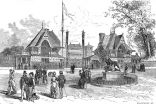
21st March 1859
Philadelphia Zoo
(Philadelphia, Pennsylvania, USA) The opening of the London Zoo to the public in 1847 inspired America's intellectual class to show interest in building a zoo in the U.S. Dr. William Camac of Philadelphia had traveled throughout Europe in the 1850's and visited the London Zoo. Upon returning to the U.S. he advocated to build a Zoo in Philadelphia. On March 21, 1859, the Pennsylvania legislature incorporated the Zoological Society of Philadelphia. The incorporation paper reads: "The purpose of this corporation shall be the purchase and collection of living wild and other animals, for the purpose of public exhibition at some suitable place in the City of Philadelphia, for the instruction and recreation of the people." Camac worked with other Zoological Society members to raise funds and secured 33 acres on the West Philadelphia side of the Schuylkill River previously owned by John Penn, grandson of William Penn. The opening of the Zoo was delayed by the Civil War which lasted from 1861 to 1865. When the Philadelphia Zoological Garden first opened its Victorian gates on July 1, 1874, to over 3,000 visitors, it was the only institution of its kind in the New World. The zoo began with varied exhibits containing 200 mammals, including buffalo, deer, wolves, foxes, bears, and monkeys, and 67 bird species and 15 reptiles. Reptiles and small mammals were housed in The Solitude, a mansion built by John Penn in 1785. A carriage house was located at the entrance for horses that had transported visitors to the zoo. The landscaping and architecture mimicked a Victorian garden atmosphere that is still represented in the present zoo grounds.
woaqzo@yahoo.com